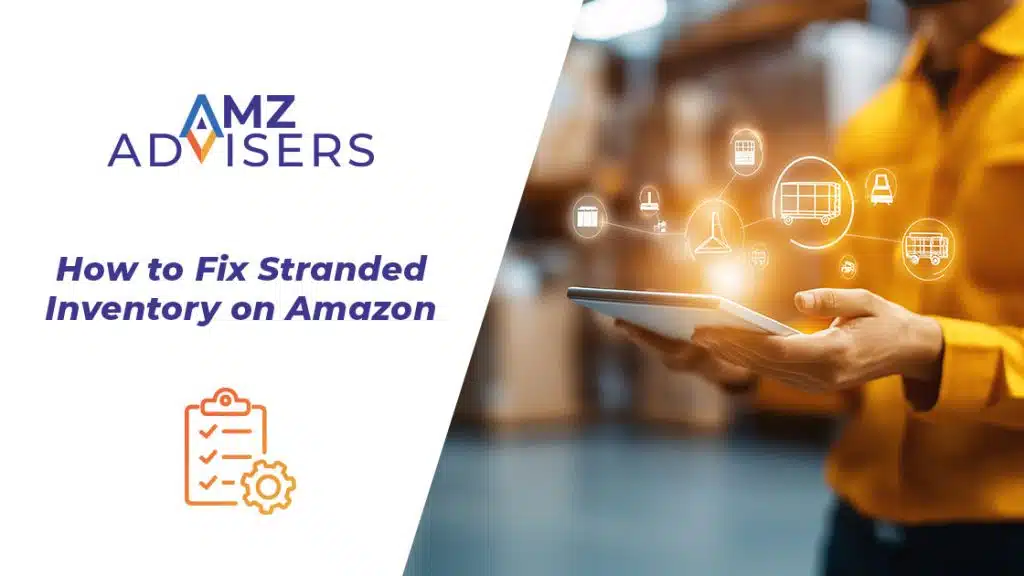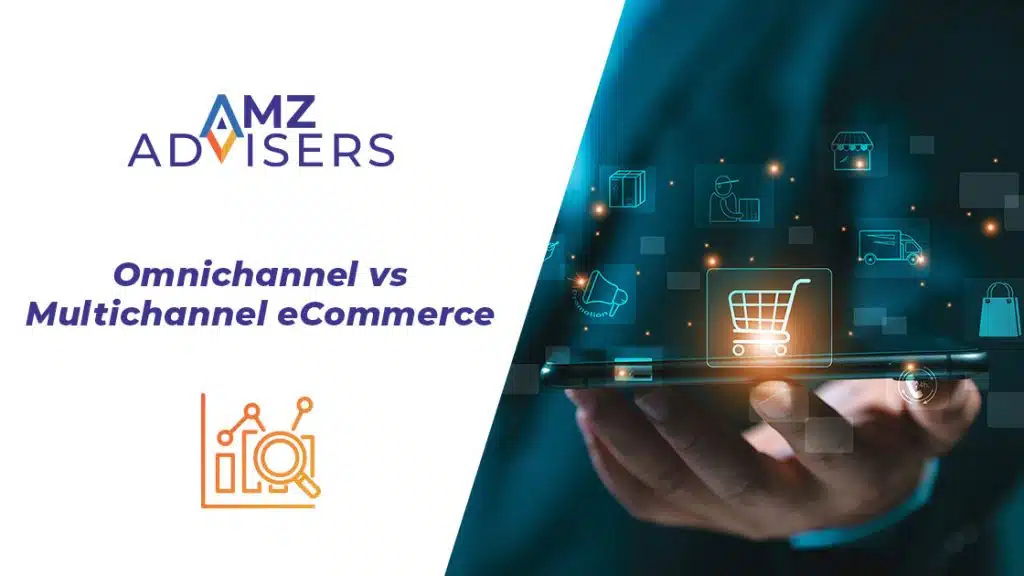Let’s explore and answer some of the most common Amazon FAQs so you can stop looking for answers everywhere.
Selling on Amazon can seem complicated. The retail giant seeks new ways to improve customer experience on a daily basis. This also translates to new challenges for sellers, old and new.
The good news is that you are not alone. Every business owner who decides to sell on Amazon shares your questions. How to set up an Amazon Store? How to deal with low sales? What are the fees required for FBA?
Every question begets quick and effective responses so you can keep on selling. However, some issues are more common than others.
Our Amazon experts deal with such issues 24/7. They have the answers to the most common Amazon seller questions. Today, they’d like to share them with you. Let’s answer some of the most common Amazon FAQs so you can stop looking for answers everywhere.
General Amazon FAQs
Let’s start with the most common Amazon FAQs out there:
How Do I Start Selling on Amazon?
Starting on Amazon is a pretty easy process, though it requires some planning. First, you need to create a seller account and choose between an Individual or Professional account.
The Individual plan is best if you plan to sell fewer than 40 items per month, while the Professional plan is ideal if you intend to sell more. You’ll also need to provide details like your business name, address, tax information, and a valid credit card.
What Products Can I Sell?
Amazon has over 20 categories that are open to all sellers, including popular options like electronics, books, and clothing. However, some categories, such as fine jewelry or certain health products, are restricted and require Amazon’s approval.
It’s important to verify if your category or product needs approval before you start selling, as this will take some extra time. You should also consider avoiding these products and go for easier-to-enter categories, at least until you gain experience.
What Are the Costs Associated with Selling on Amazon?
Selling on Amazon involves a lot of costs that add up and should be considered before even starting. Some of the general fees included in any Amazon store are:
- Referral Fees. Amazon takes a percentage of each sale, typically ranging from 6% to 45%, depending on the product category.
- Subscription Fees. The Professional selling plan costs $39.99 per month, while the Individual plan has no monthly fee but charges $0.99 per item sold.
- Fulfillment Fees. If you use Fulfillment by Amazon (FBA), you’re subject to fees for storage, picking, packing, and shipping your items.
If you don’t understand costs before diving into pricing, you will lose money in the long term. This is why you need to focus on understanding costs before even thinking about pricing your products.
If you want a better estimate, you can always use Amazon’s free Revenue Calculator to estimate your total costs and determine a profitable pricing strategy.

Amazon FAQs about Fullfilment and Shipping
What Is Fulfillment by Amazon (FBA)?
FBA is a service where Amazon stores, packs, and ships your products, handles customer service and manages returns. This program allows you to keep growing without worrying about logistics. So, it can be quite beneficial if you’re selling high volumes and want to scale quickly.
Data from Worldmetrics shows that 66% of the top 10,000 sellers on Amazon use FBA, as of 2023. The service not only saves time but also makes your products eligible for Amazon Prime, which can significantly help increase sales without any extra effort.
However, FBA comes with its own costs, such as storage and fulfillment fees. The problem with these expenses is that they can add up without you even noticing, especially if your items don’t sell quickly.
One of the most common FBA mistakes is going for this model without considering if it works for your specific business. So, make sure that you do proper research on FBA before subscribing to the program.
How Do I Manage Shipping and Fulfillment?
When talking about Amazon shipment, you have two main options: Amazon FBM and Amazon FBA. With FBM, you manage everything from storing your products to shipping them directly to customers. This option gives you more control but requires more time and effort.
In contrast, FBA allows Amazon to handle these tasks, which can be beneficial if you want to focus on other aspects of your business.
So, how can you choose one? Well, if you’re starting small, FBM might make more sense. Once you start growing, FBA becomes the better option.
Amazon Seller FAQs About Support
Some Amazon seller issues are only solvable by Amazon. For example, errors in pricing or faulty selling metrics. In these cases, merchants can use the following resources to answer their questions.
Where Can I Find Help as a Seller?
Amazon provides several resources to help sellers succeed. The main platform for managing your account is Seller Central, where you can list products, manage orders, and access reports.
The Amazon Seller University offers free training videos on various topics, from listing optimization to account health management.
Additionally, you can find answers to many Amazon FAQs in Amazon Seller Forums. This is a seller-exclusive space where you can talk to other Amazon merchants. Experienced sellers share advice and insights, and you can discuss any sales issue you can imagine.
You only need to submit your questions to get a stream of answers. Brands will respond almost immediately, so you may find your answers in no time. You can also start full chat conversations to dig a little deeper into any Amazon-related issue.
Amazon Seller Support
If you can’t find the answer to your question anywhere, it might be time to contact Amazon seller support so an expert can come to the rescue. Seller Support is designed to put sellers in touch with Amazon. Its goal is to troubleshoot any setback related to Amazon sales. For example:
- Product listing issues
- Stock management and deliveries
- Item packing or shipments
- User returns and refunds
Seller Support has different areas of specialty. So, you should select the right issue before messaging Amazon’s staff. Here’s the process to do it:
- Log in to Amazon Seller Central and go to “Help.”
- Choose “Advertising and Stores” or “Selling on Amazon.”
- Submit your query in the search bar.
Now you’ll see the support categories related to your specific problem. Select the one that best reflects what you’re trying to solve.
In case you still can’t find your answer, click on “Get Support”. Here, go to “Selling on Amazon” and describe your selling problem in detail. This way, Amazon Seller Support will get a better grip on what you want to solve.
Another option is to talk with Amazon Seller Support directly. To do so, click on “Other account issues”. This will open 2 tabs: phone and email. Choose either option to start a conversation with Amazon.
In most cases, Seller Support will contact you in less than 24 hours. From then on, you can state your case with an Amazon Associate, who’ll help you solve your problem.
Amazon Seller Central Help Page
You may have bumped into this page in the past. Help for Amazon Sellers gathers every technical issue related to Amazon sales.
You can find detailed info about any topic you can think of. For example, opening a brand-new account, FBA troubleshooting, and Amazon’s policies.
Amazon Selling Partner Blog
Amazon hosts its very own blog. Here, the retail shares every update or innovation related to the marketplace.
The blog also has many posts which address Amazon seller questions and troubleshooting solutions. Make sure you save the blog and check regularly, so you’ll be up to date on all Amazon-related news.
Amazon FAQs About Making Money on Amazon
Is Amazon Selling Profitable?
Selling on Amazon can be a great way to make money and start a business. With millions of people shopping on Amazon every day, you have a big audience for your products.
However, it’s important to understand that selling on Amazon isn’t a quick way to get rich. It takes work and planning to be successful. For example, you need to choose the right products. If you sell trendy items that people want but there’s a lot of competition, you might not stand out. Researching and picking products with less competition can help, like focusing on niche items that aren’t widely available.
What Can I Do If My Amazon FBA Products Are Not Selling?
If your FBA items are not selling well, there are several things you can do. First, check your listings to make sure they are clear and well-optimized. Good descriptions, quality images, and proper keywords are essential.
Increasing your advertising budget or trying different types of ads can help. You can also consider adjusting your prices or using a repricing tool to stay competitive. If a product still isn’t selling, you might need to consider liquidating the stock to recover some of your investment.
Related content: The Opposite Guide | How to Ruin Your Amazon Business
More Amazon FAQs From our Experts
Daily Ad Spend
Each ad campaign has a set budget to spend each day. That’s said, this does not mean that you will use that whole amount every day.
Your overall spend will depend on the clicks that your ads get, and also on your ad bids. There are 3 types of bids you can use:
- Dynamic bids (down). Amazon lowers your ad bid if it predicts that the ad won’t get many conversions.
- Dynamic bids (up and down). Amazon will adjust the ad bid depending on the fluctuating conversion rate.
- Fixed bids. These keep the original bid for the duration of the campaign, unless you make an adjustment.
Improving Flat Sales Volume
There could be many reasons that cause sales stagnation. First off, you should narrow down the possible causes. So, ask yourself:
- How big is the market you’re in?
- Does your market have many competitors?
- What’s your current sales status?
- Are there growth opportunities you can exploit?
- Do you rank among the top sellers for your niche?
If you’re running an ad campaign, perhaps you need to increase your bids and budget. If your problem lies with conversions, then try to optimize your listings:
- Detailed content. Share specific product details. Let customers know as much as possible about an offer.
- Quality visuals. Include up to 8 images that portray the value of your product.
Also, encourage product reviews from customers. Positive reviews will boost your search ranks, so more users can find your listings.
Amazon Search Ranks
Brand new listings may need some time to start ranking on Amazon. The A9 algorithm considers keywords, conversions, and reviews to bump your listing in the search engine.
Relevant keywords boost organic traffic. Take the time to research the best keyword that can help you. As a rule of thumb, go for terms that your customers will use.
You should also invest in marketing so that customers notice your offers. Once you start selling and delighting customs, Amazon will take notice.
Vendor Central vs Seller Central
Amazon vendors are wholesale suppliers for Amazon. They rely on Vendor Central as their work dashboard.
Amazon sellers are third-party brands that sell their stock on Amazon. These merchants use Seller Central to run their business in the marketplace.
But which is the best option? We prefer Seller Central. Vendors give up most of the sales control to Amazon.
In contrast, Seller Central offers much more freedom to sellers. You can create and update listing content, and also control your final product prices.
Legal Status
All sellers need a legal business to set up an Amazon account. Two popular options are sole proprietorship vs LLC. We recommend setting up a Limited Liability Company (LLC) to save you many troubles.
LLCs keep business assets separate from personal assets. So, you won’t be as vulnerable in case something goes wrong. Plus, you’ll also pay fewer taxes, and be eligible for more tax deductions.
A sole proprietorship is easier to set up. However, this model also means you’ll be tied to your business. So, any issue with your Amazon account will directly affect you and your personal assets. And you’ll also be subject to higher income taxes.
Product Inspections
You can’t sell just any kind of product from the get-go. Some may need proper testing and certifications before you can sell them.
Your country’s government should provide a list of such items. For example, the US Regulations, Mandatory Standards, and Bans offers many guides that regulate the selling of dangerous materials.
Make sure you inspect products before shipment. You can also go the extra mile by checking your manufacturing materials during production. This will help you get the proper certifications before you start selling.
Addressing Common Amazon Seller Problems
Even if you are planning carefully, you can come across some common challenges such as Amazon FBA items not selling or dealing with negative reviews. These issues can be frustrating, but they’re more common than you think.
There’s no reason to panic: all you need to do is have the right tools to address them as quickly as possible.
Remember that, when solving specific problems, it is better to implement one solution at a time. Don’t try to improve SEO, fulfillment, shipping, and customer service all at once: work on one aspect and check what impact that has. Then you can go into the next step.
Final Thoughts
Maybe you already enjoy great success on Amazon. So, you may think “I’ve figured out the Amazon marketplace” ― but there is always more to learn.
Selling on Amazon is a journey filled with opportunities, but it also requires a lot of work and research. Even seasoned brands run into a few setbacks from time to time.
By understanding and addressing the most common Amazon FAQs, you can better navigate the platform and achieve your business goals. Plus, they are the gateway to overcoming possible pitfalls as quickly as possible.
Some of the questions that come your way will be really specific to your own journey, and you will need to get creative. Make sure to be part of some Amazon seller communities so you stay informed and can take on these bigger challenges down the road.
If you think you may need some help, you can always contact our Amazon experts. Our team is ready to provide the best assistance and services for Amazon sellers like you.
Author
 Esteban Muñoz is a content manager with several years’ experience in digital marketing and ecommerce. He’s been able to achieve incredible growth for his associates by optimizing and managing their accounts, and creating in-depth content marketing strategies.
Esteban Muñoz is a content manager with several years’ experience in digital marketing and ecommerce. He’s been able to achieve incredible growth for his associates by optimizing and managing their accounts, and creating in-depth content marketing strategies.
 Antonella Fleitas is highly adept at creating fact-based, evergreen content about science, language learning, and culture. Her main goal is to build a strong content foundation for her clients, based on meaningful stories that people can learn from.
Antonella Fleitas is highly adept at creating fact-based, evergreen content about science, language learning, and culture. Her main goal is to build a strong content foundation for her clients, based on meaningful stories that people can learn from.



